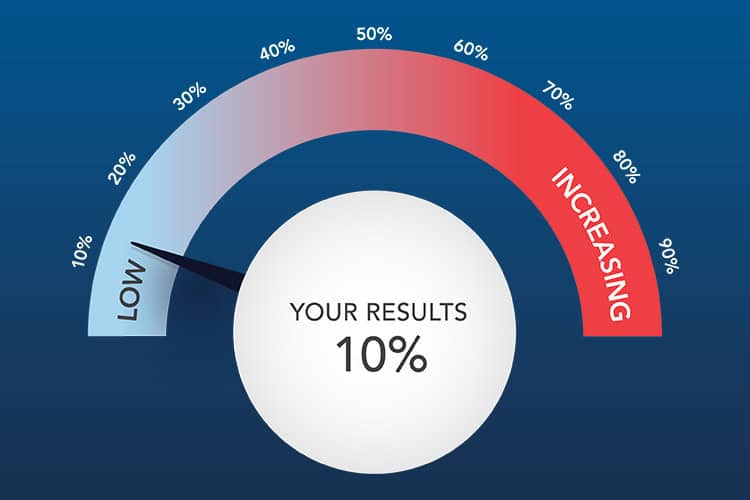June 27, 2024
Understanding Your MPS2 Patient Risk Report

MPS 2.0 is a peer-reviewed and validated next-generation urine biomarker test that helps accurately determine the likelihood that clinically significant prostate cancer would be found in a prostate biopsy in men who have an elevated PSA. Please read on if you have taken the MPS 2.0 test and want to understand your results.
“Diagnostic accuracy”
The test’s algorithm, which drives the test results, was optimized to be highly accurate and personalized.
The test achieves its accuracy not only by measuring 18 biomarkers associated with clinically significant prostate cancer but may also consider other factors related to your clinical history. All of these inputs matter. While these are a lot of inputs, make it easy to understand your results.
The score
The MPS2 test transforms the complex data from the 18 biomarkers and optional clinical factors into an easy-to-interpret, single percent score.
The percent score represents the likelihood of detecting clinically significant prostate cancer on a subsequent biopsy. Your doctor can interpret your risk percent in the context of the full 0-100% range and in relation to the threshold that separates low-risk results from higher-risk results.
Risk levels and thresholds
The MPS2 test’s risk percentage result will either fall into an area of “low risk” or an area of “increasing risk.” The threshold between “low” and “increasing” varies for individual patients based on their biomarkers, clinical factors, and history of prostate biopsies.
Based on the risk level of your result, you and your doctor can decide whether you should undergo a prostate biopsy.
What a “low risk” score means
For men who have never had a prostate biopsy, what does an MPS 2.0 “low risk” test result mean?
For biopsy naïve men, a low-risk result identifies half of those patients who would receive a negative biopsy result, with a negative predictive value of 93 to 95%. This means that out of 100 men with a low-risk result, 93 to 95 of them would have a biopsy negative for clinically significant cancer.
What about men being considered for a repeat biopsy–what does “low risk” mean?
A low-risk result identifies half of those men who would receive a negative biopsy result, with a negative predictive value of 98 to 99%. This means that out of 100 men with a low-risk result, 98 to 99 would have a repeat biopsy that would come back negative for clinically significant cancer.
MPS 2.0’s ability to personalize the risk of clinically significant prostate cancer for both previous negative biopsy and biopsy naïve patients makes it the most comprehensive and flexible prostate cancer risk assessment tool available.
If you have a high PSA and want to do a simple, easy test to assess whether or not to proceed with a prostate biopsy, talk to your healthcare provider to see if the test is right for you. Your doctor and you are the right people to make those decisions together.